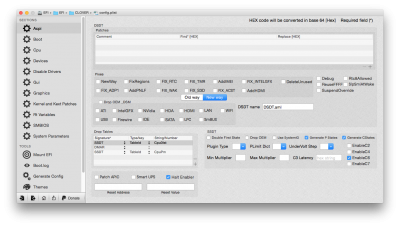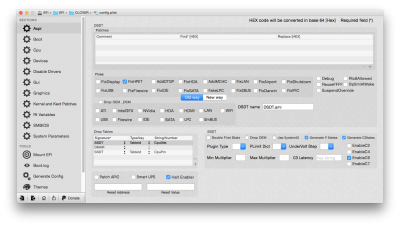- Joined
- Sep 27, 2014
- Messages
- 60
- Mac
- Classic Mac
- Mobile Phone
Haswell-E + X99 Motherboard Temporary Guide - OS X 10.10.0


When I first installed OS X I had random login in / boot issues and thought it had to do with clover settings but i couldn't fix it. I installed OS X on a test volume [hdd] and decided to put it on the ssd so i wouldn't have to spend 5 minutes waiting for it to boot. Low and behold it worked perfectly after that so apparently all my issues were caused by a faulty hard drive.
thanks.Ok, will try with that bios version. Only flags that I had were -v to see what's happening, kext-dev-mode, nvda_drv and npci=0x2000
How does your ACPI settings looks like regarding DSDT and SSDT?
Can you put screenshot of it?
Tnx for your help on this thread Bomerr, I installed mine by following your instructions


When I first installed OS X I had random login in / boot issues and thought it had to do with clover settings but i couldn't fix it. I installed OS X on a test volume [hdd] and decided to put it on the ssd so i wouldn't have to spend 5 minutes waiting for it to boot. Low and behold it worked perfectly after that so apparently all my issues were caused by a faulty hard drive.
